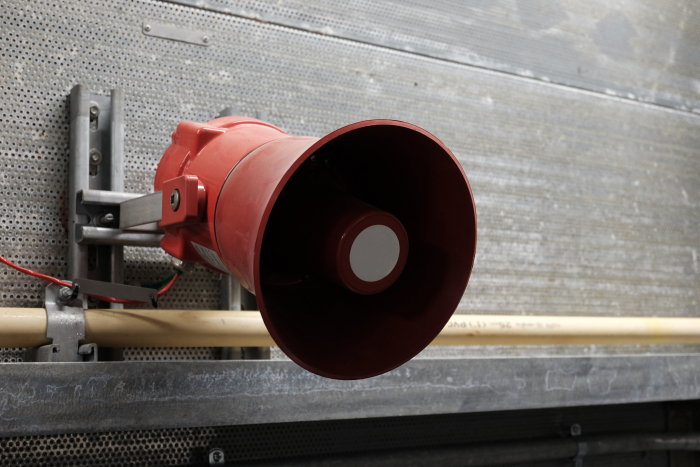What makes an acoustic warning audible, and be able to convey the appropriate information such as urgency or need for action? It is just a case of, the louder the better? Not necessarily: a startle or fright reaction should be avoided, as this can delay the person in taking the appropriate action. Advice in BS EN ISO 7731:2008 is that the signal should be designed to be audible in comparison to the background or ambient noise against which it is competing, and so should be distinctive in frequency content. It should not have a very rapid onset or change in sound level. Two dominant components are recommended, with time-varying signals preferred, for example pulsing on/off or varying frequencies. Needless to say, acoustic warnings should have these qualities in those areas in which they are intended to be heard.
What if the people who need to hear the warning are wearing hearing protection? Acoustic warning signal design can also take this into account. Distinctiveness remains the key, as both the warning signal and the background noise will be reduced. Employers should however check both distinctiveness and overall sound level with hearing protection.
The Health and Safety (Safety Signs and Signals) Regulations 1996 state that acoustic signals must be ‘considerably higher than the level of ambient noise’, and ‘easily recognizable’. Guidance in HSE publication L64 to the phrase ‘considerably higher’ states “acoustic signals should be set at a level which is considerably higher in terms of frequency than the ambient noise, for example 10 dB above the level of ambient noise at that frequency.”. This, in the author’s view is ambiguous, and simplistic, and BS EN ISO 7731:2008 gives much more sophisticated and helpful advice on making sure that acoustic warnings are audible. It may be that HSE agrees on this point, since its published operational guidance[1] (internal advice to inspectors) recommends that BS EN ISO 7731:2008 is used in assessing acoustic warning signals in the workplace, for example when investigating accidents and incidents.
[1] https://www.hse.gov.uk/foi/internalops/og/og-00117.pdf (see also https://www.hse.gov.uk/foi/internalops/og/index.htm)


